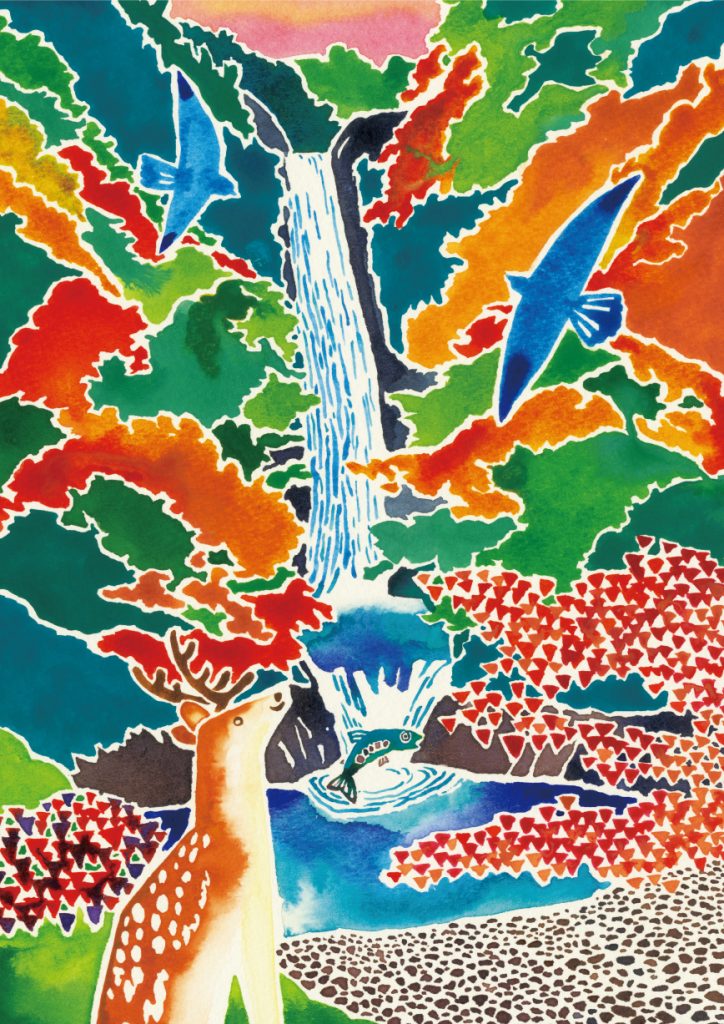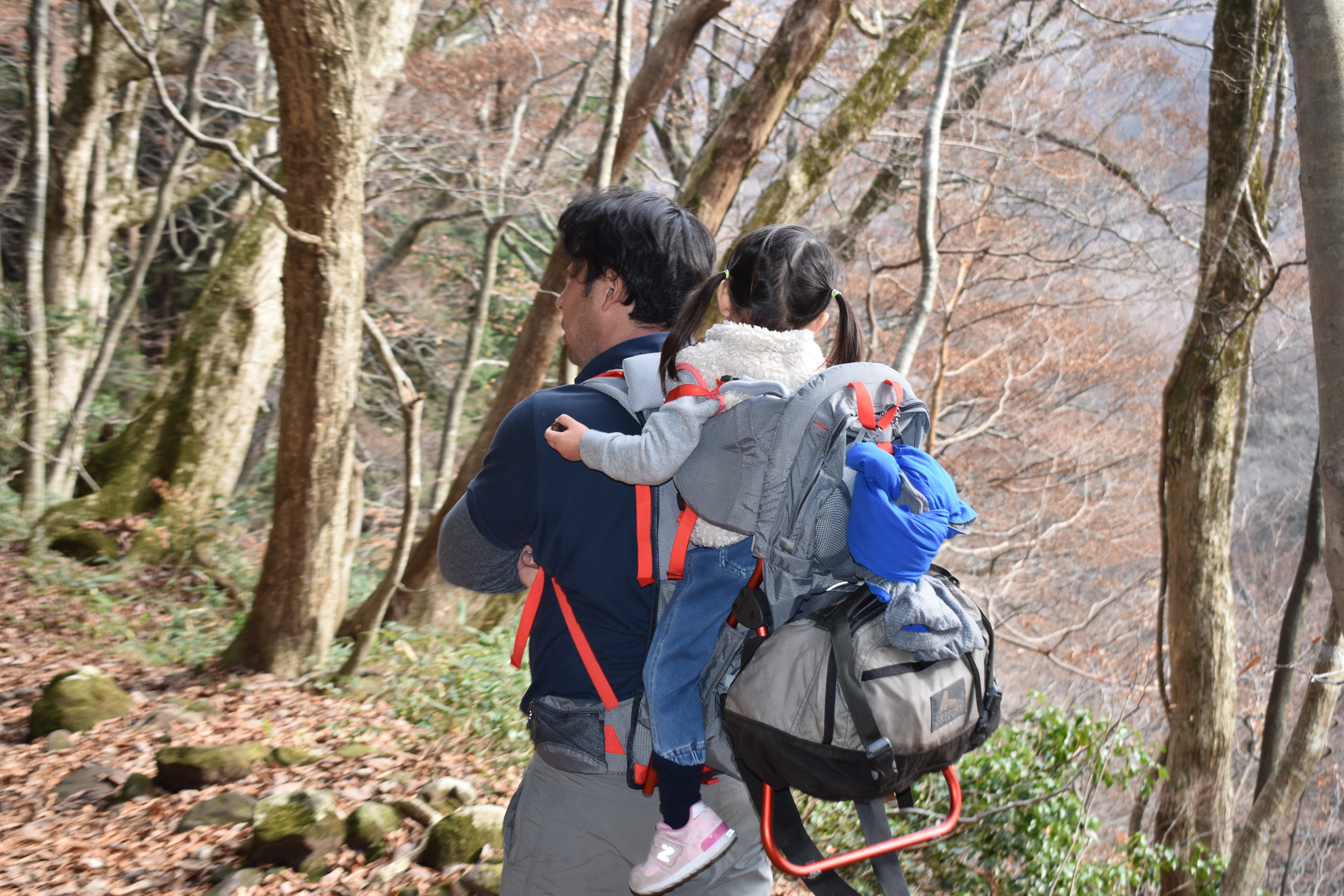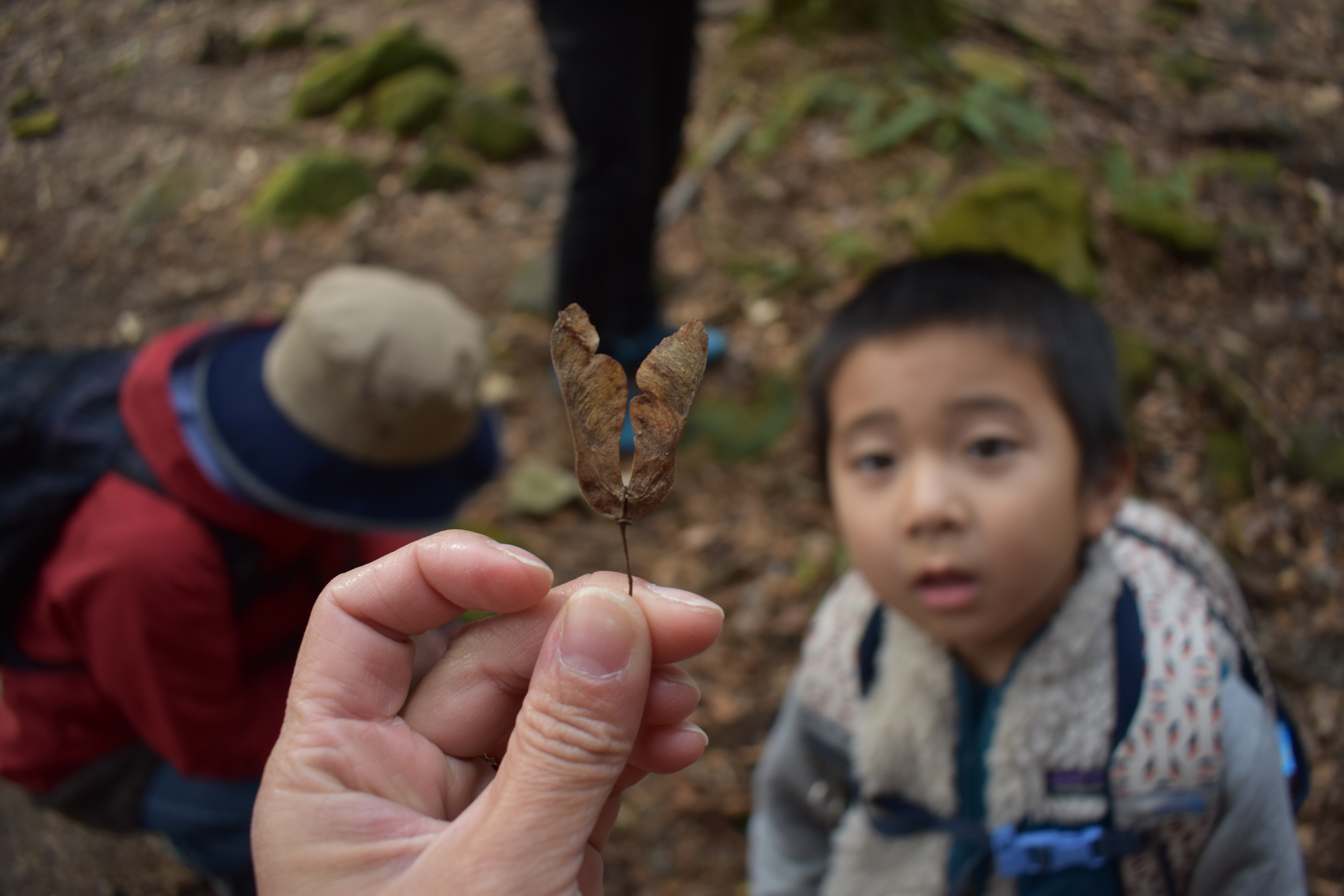Grand and Beautiful – Daisen Falls

About 30 minutes from the Sanindo/Kotoura interchange, there is the Ikkoganaru campsite at the start point for the Daisendaki waterfall.
The Ikkoganaru campsite is a very popular campsite visited by many people in the summer. In fact, in addition to camping, it is also visited by many people hiking to Daisendaki waterfall.
“Daisendaki waterfall” chosen as one of the top 100 waterfalls in Japan. You can get to the Daisendaki waterfall from the Ikkoganaru campsite. It is somewhat separated from the Daisen area but is a popular hiking course with both family and female groups.
Today, I aimed for the Daisendaki waterfalls with Koichi Kuruma, nature guide. Those participating today, in addition to me, were my husband with our 4-year-old son and our 2-year old daughter in a carry bag on his back.

“The good thing about hiking to Daisendaki waterfalls is that the course is easy for a wide range of age groups as well as female hikers to use. I am sure your 4-year old son will be fine!” says Kuruma.
“For a while, there are flat roads. Look. There are many fallen beech leaves”. There are leaves that have holes from being eaten by insects with only the veins of the leaf remaining. There are wild plants growing on the roadside despite the fact that it is December.

It takes about 30 minutes to walk. There are also steep steps. I was a little disconcerted by the fact that it would be downhill on the way there….and so….uphill on the way back, but as I descended the steps within the wood, the world opened out in front of me. There was a large suspension bridge there. This is “Daisen waterfall bridge”. This suspension bridge has a length of 30 meters and a height of more than 30 meters looming over the Kasechigawa river. As I suffer from acrophobia, I was a bit nervous about crossing it, but my son who was probably walking across a bridge for the first time ever, was delighted. He ran and had crossed the bridge in no time. Kuruma states that “before this suspension bridge was built, people crossed on logs”.

On crossing the suspension bridge, you are first met by a gentle mountain path. There is then a signboard saying “Danna goya” (husband hut) standing in the woods. This appears to be the remains of where furnace craftsmen used to live, and Kuruma notes that “it is a testament to how good the natural environment is that you can make furnaces”.
There were certainly many different types of trees, wild mountain grass, fruits and plants along the mountain path. “Look! Look at this. I will make this 5-yen coin shine”, Kuruma says. He then polishes the 5-yen coin using a green leaf. In no time it was shiny. My son copied this and polished a 5-yen coin. My daughter was thrilled at the heart shape of the oxalis. “So cute!” she squealed. In addition to playing with the oxalis, leaves were falling at her feet. Kuruma tells us about the small strange-shaped things. If you throw them into the air as instructed, they rotate as they fall to the floor. My son was so excited, shouting “It’s a helicopter!” This was actually a type of maple.

At a child’s pace, you finally reach Daisendaki waterfall in about 90 minutes. There you find an extremely intense waterfall. You can descend as far as the basin, and as we could use rope and chains, our goal was to reach “Takimidai”.
Along the course, we had to overcome some steep steps and the like, but in no time at all, we had completed, with our kids, a 1.8 km course in just over 3 hours including breaks. Although it is not recommended that you try this in the cold winter season, during spring, summer, or fall, you will certainly be able to experience the natural change of the seasons.

As you pass through the crisp forest, lined with beech trees, you are face-to-face, in that instant, with the silent forest. Hiking around Daisendaki waterfall where the nature remains in its original form. Here, as well, the wonders of nature, receiving the blessings of Daisen, stretch out before you.